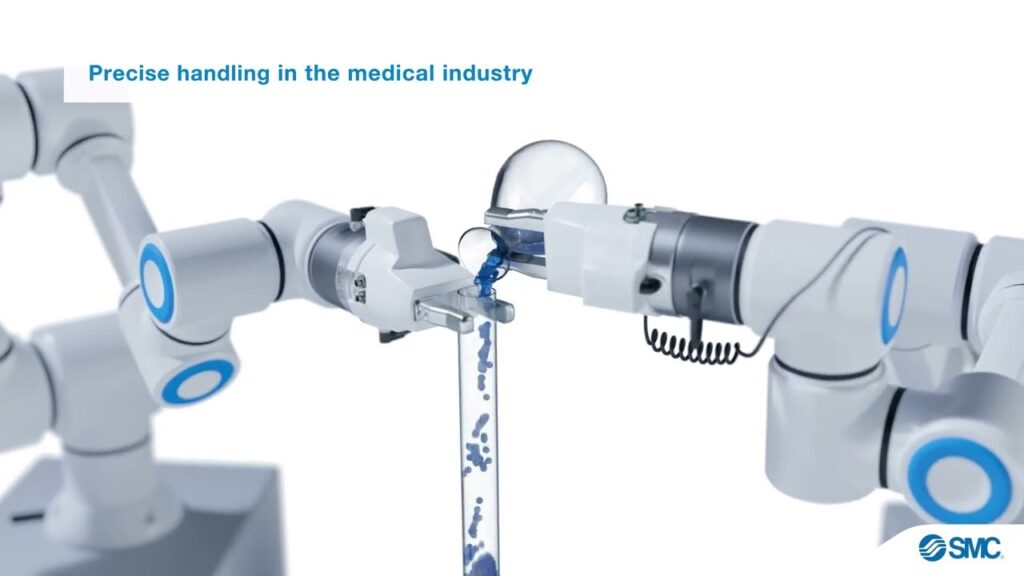**Title: Enhancing Efficiency in Industrial Automation with SMC’s End Effectors for Collaborative Robots**
Industrial automation has revolutionized the manufacturing industry by boosting productivity, efficiency, and precision. Among the key components of automation, robots play a vital role in various industries. With their ability to perform repetitive tasks with consistency and precision, robots have become the go-to solution for streamlining manufacturing processes. One crucial aspect of a robot’s functionality is its end effector, which enables the handling and gripping of different types of materials. In this article, we explore SMC’s innovative end effectors for collaborative robots, their versatility, and the impact they have on industrial automation.
End effectors, also known as robot grippers, are the “hands” of a robot that allow it to grasp, move, and manipulate objects. Collaborative robots (cobots) are designed to work alongside human operators, enhancing productivity while ensuring safety. One of the leading manufacturers of innovative robotic solutions is SMC Corporation. With their cutting-edge end effectors, SMC enhances the capabilities of collaborative robots, making them ideal for a wide range of applications.
**Enhancing Efficiency with SMC’s End Effectors**
SMC offers a comprehensive range of end effectors for collaborative robots that are designed to handle and grip workpieces made from different types of materials. Whether it’s metal, plastic, glass, or any other material, SMC’s end effectors provide a versatile solution for various industrial applications.
**Versatility through Modular Design**
One of the standout features of SMC’s end effectors is their modular design. This allows for easy customization and adaptability to different tasks and workpiece types. The modular components include gripper fingers, palm adapters, and tool changers. Gripper fingers come in various shapes and sizes to accommodate different materials and shapes, ensuring a secure and stable grip.
Moreover, the palm adapters facilitate seamless integration with a wide range of collaborative robot models, making SMC’s end effectors compatible with various brands and manufacturers. This flexibility eliminates the need for costly and time-consuming robot reprogramming or hardware alterations, thus saving both time and resources.
**Efficient Material Handling**
SMC’s end effectors are specifically designed to provide precise and reliable material handling capabilities. This is made possible through the integration of advanced sensing technologies that enable the detection of workpiece positions and orientations. By accurately sensing the size and location of workpieces, SMC’s end effectors ensure optimal gripping and handling, minimizing the risk of damage or errors in the manufacturing process.
**Safety and Ergonomics**
Collaborative robots are designed to work harmoniously with human operators, emphasizing safety and ergonomics. SMC’s end effectors fully align with this objective, incorporating safety features such as force-sensing technology and quick-release mechanisms. These features allow the robot to detect any unexpected resistance or collision, enabling it to stop immediately, ensuring the safety of both the robot and the human operator.
Furthermore, SMC’s end effectors promote ergonomics by reducing the strain on human operators. By taking over repetitive and physically demanding tasks, the robot reduces the risk of human error and fatigue, ultimately improving the overall efficiency and productivity of the manufacturing process.
**Applications in Industrial Automation**
The versatility of SMC’s end effectors makes them suitable for a wide range of applications across industries. From pick-and-place operations, assembly, and packaging to material sorting and quality control, SMC’s end effectors enhance the capabilities of collaborative robots in diverse manufacturing processes.
**Conclusion**
SMC’s end effectors for collaborative robots bring a new level of efficiency and versatility to industrial automation. With their modular design, advanced sensing capabilities, and focus on safety and ergonomics, SMC’s end effectors provide an unparalleled solution for efficient material handling across industries. As the demand for industrial automation continues to grow, the incorporation of SMC’s end effectors into collaborative robot systems will undoubtedly yield enhanced productivity, reduced costs, and improved operational performance. Embracing the potential of SMC’s end effectors is a step towards a more efficient and automated future in manufacturing.
Industrial Robot
“Exploring End Effectors for Collaborative Robots and Different Types of Industrial Robotics”


